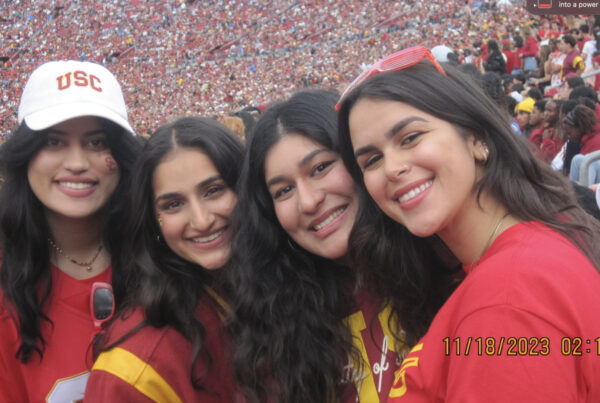As I entered my junior year, I believed I had a solid grasp of what mechanical engineering entailed and what I could expect from my third year at USC. However, I soon realized I was mistaken. In essence, I knew that mechanical engineering included the design, analysis, manufacturing and maintenance of design systems. However, the degree to which I understood what this meant was tested in my current and last semester.
What is all the hype behind Mechoptronics?
Before junior year, my coursework primarily consisted of general education or introductory engineering classes. While challenging at times, these courses all felt like extensions of concepts I had been exposed to in high school. For example, even without a formal physics education, I understood Newton’s Laws of Motion, and while I hadn’t tackled triple integrals in Calculus III before, double integrals were familiar territory. Even, the major specific classes such as AME 101: Introduction to Mechanical Engineering, covered topics at a broad level, saving us the need to delve into intricate details just yet.
Then came junior year, and with it, AME 341 A/B: Mechoptronics Laboratory. Yes, I had the same initial thought as you – what does that even mean. Turns out it was the easiest way mechanical engineers wre able to shorten “Mechanical, Optical and Electronics”. Coming into last semester, this class, I heard, was the ultimate challenge for mechanical engineering students. But what exactly made it so daunting? Was there a lot of content? Was the content confusing? Did it just take a long time to do the work? I’ve learned that yes. It’s everything.
But despite being so academically rigorous, it has been eye-opening. The course dived deep into mechanical systems, unveiling the intricacies that are often overlooked. We not only spent weeks learning about the internal configuration of an Op Amp and the theory behind the circuit but saw how it could be used in experimental set ups to amplify voltages from Wheatstone bridge circuits.
Beyond the technical jargon, the course also imparted invaluable skills. This class includes lectures as well as a 3-hour weekly lab, offering students unprecedented freedom in experiment design and data collection. It is the first time that I was not given a detailed method but rather a set of guidelines I had to adapt and interpret using my knowledge from class. This autonomy meant longer hours in the lab, but sharpened our problem-solving abilities, and instilled a habit of thorough checking through thorough experimentation and analysis.
Moreover, as lab reports carried more weight than exams, we not only learned how to interpret lab observations, but also to communicate our findings and thoughts concisely and effectively. Therefore, while all the content covered may not apply to my future profession, the course taught me what I believe underscores and distinguishes any mechanical engineer – their ability to translate textbook knowledge into real-world applications, solve problems, and communicate solutions clearly.




